unknown war. White Bohemian rebellion in old and modern photographs
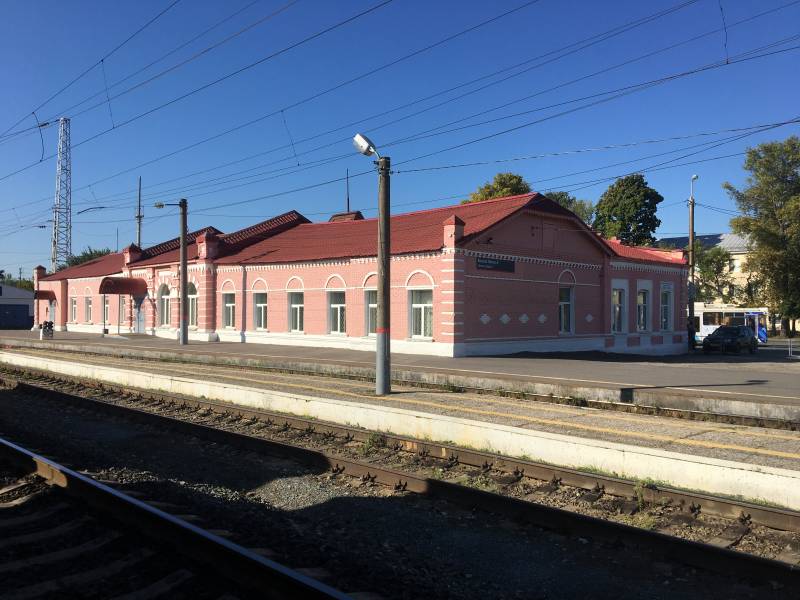
The building of the Penza-Z station today. It was rebuilt many times, but overall retained its ancient appearance.
People's Commissar for Military Affairs L. Trotsky.
— Quoted from the book. Parfenov "Civil War in Siberia". Page 25-26.
Unknown Wars. Today we continue the topic of the Civil War in Russia, based on publications in the Soviet newspaper Izvestia of that time. The time has passed to talk about how this newspaper covered the events of the White Bohemian uprising, but then the idea arose that before turning to the yellowed pages of this newspaper, it makes sense to turn on a kind of “time machine” and look at the places of these tragic events, as they say , with my own eyes.
The first such place where we will go will be the Penza-3 station. It was there that the trains of the Czechoslovak corps were concentrated in May 1918, and there they were supposed to hand over weapons and ammunition. For Penza at that time it was the Ural Station, and its role then played a much greater role than today.
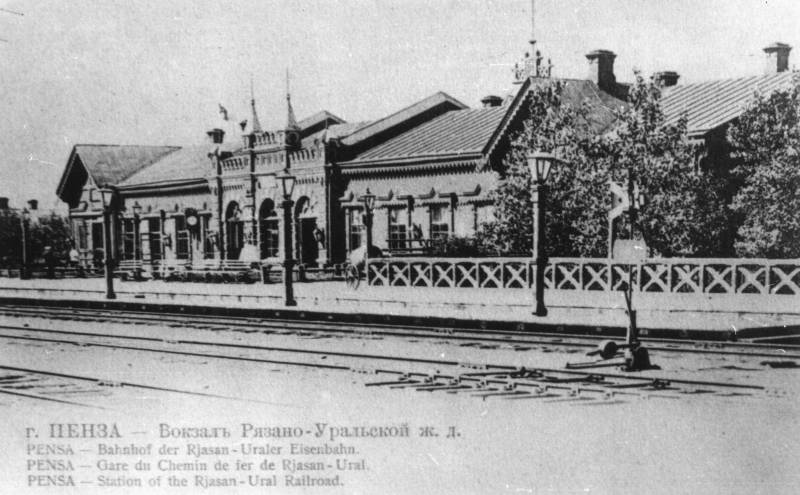
This is how it looked before the revolution... View from the railroad tracks

View of the Uralsky railway station from the side of the station square
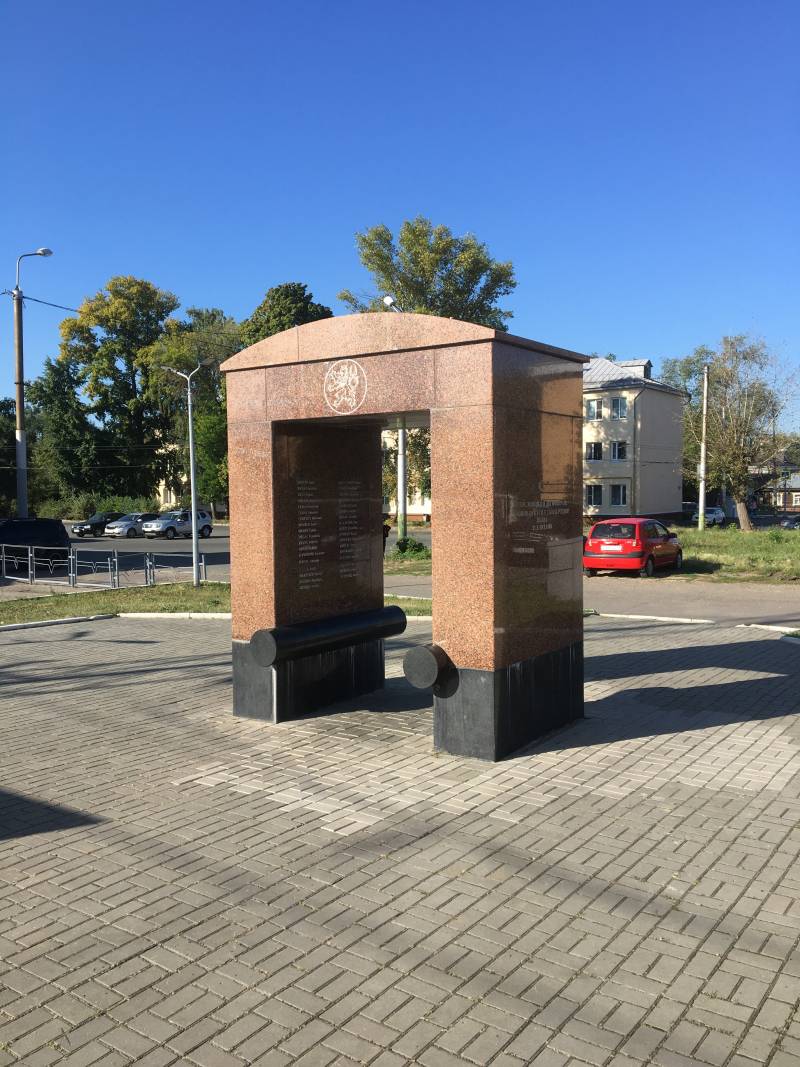
Here, on the platform, this monument to the Czechoslovak soldiers who died in those battles has already been erected in our time. Why was it installed? Most likely, the reason was the Agreement between the Government of the Russian Federation and the Government of the Czech Republic on the mutual maintenance of war graves, signed on April 15, 1999. But if our burials in the Czech Republic are, so to speak, obvious. Then where are the burials in Penza? This is the cenotaph they installed at the station. The names of the fallen are listed on its walls, and it now falls under the scope of this agreement
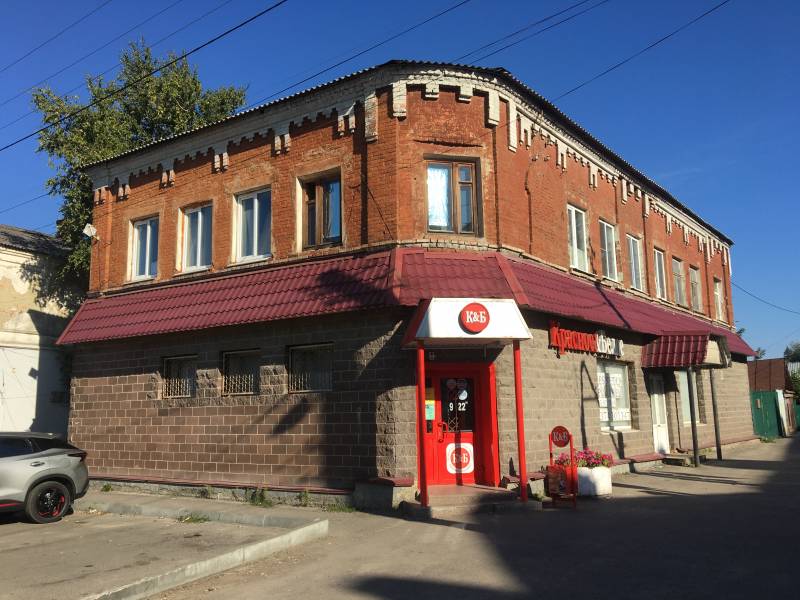
Stone house opposite the station. In 1918, he was already standing here and witnessed those events. Turn left from it, and you find yourself on the bank of the Sura River. You go right - there will be a long street along its bank, which will end with a bridge over the river. Interestingly, there has always been a store on the ground floor!

We turn left - and right in front of us is Sands Island and the pontoon bridge leading there. If everything in 1918 had been the same as it is now, it would have been enough to open this bridge to block the attackers’ path to the city center. But the Sura was shallow at that time, there was no retaining dam on its bed, and this place was flooded only during floods, and already in May it was quite possible to walk here
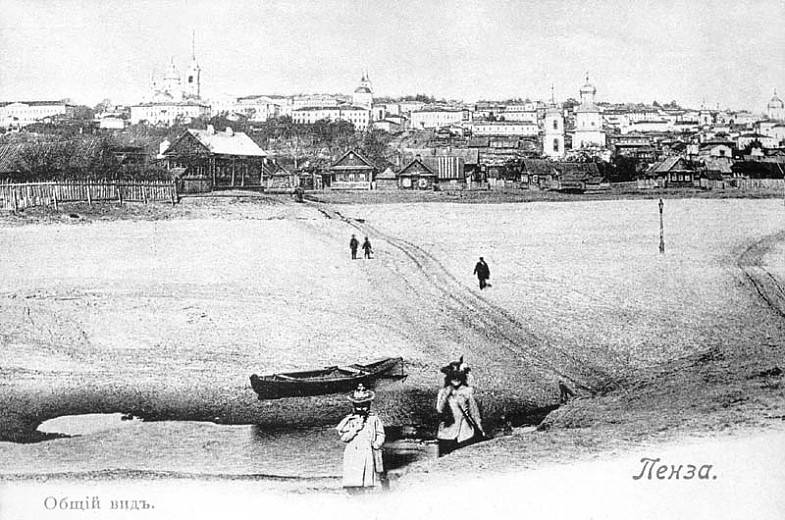
Here is the place at that time!
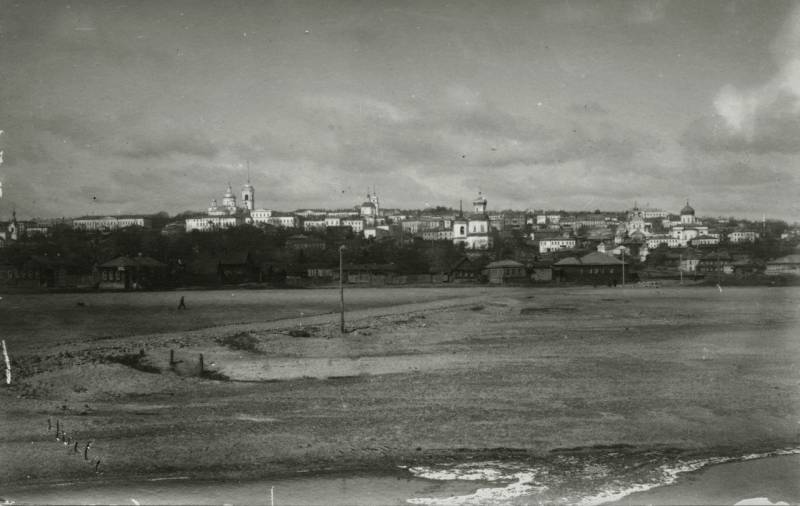
The same place from a slightly different angle.

Surprisingly, then everything here was very bare, not a tree, not a bush. There is a photo where the Czechs dug rifle cells on the right bank ... A solid “forest”, on the right, on the left. Photo from the middle of the pontoon bridge
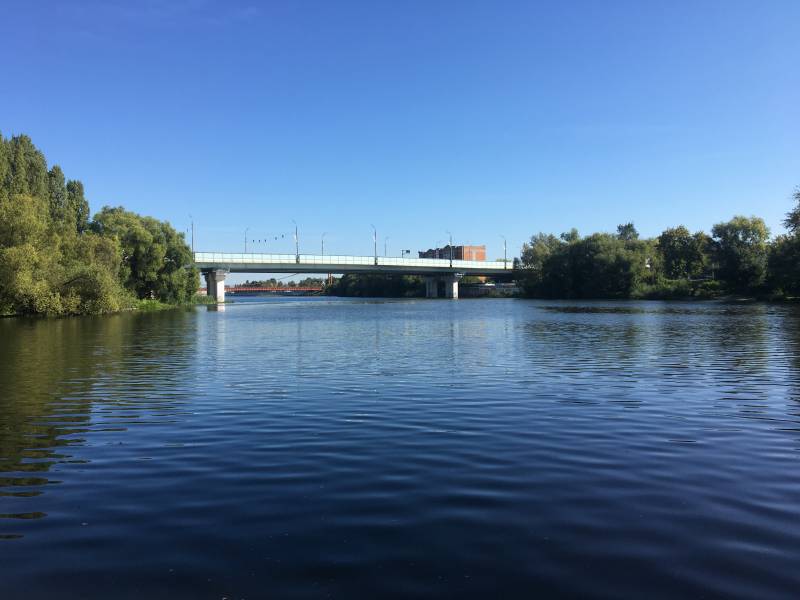
But now, not far away, this wide highway bridge has been thrown across the Sura. If it were during the rebellion, it would be very easy to get right into the very center of the city through it
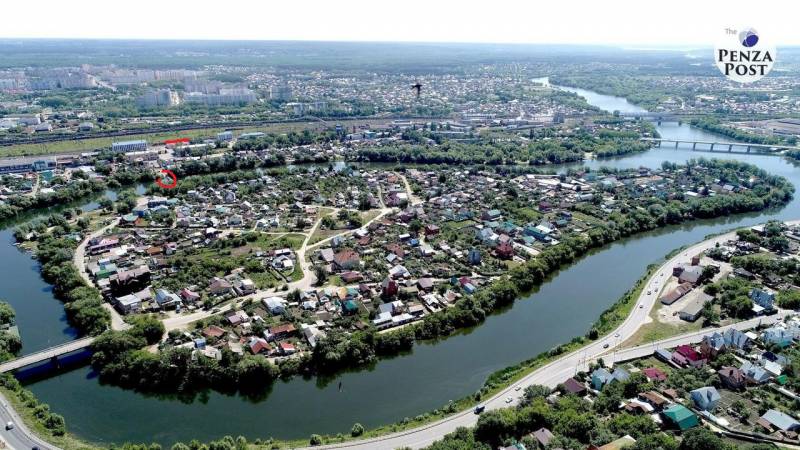
В stories mutiny island Sands played a very important role. This is what it looks like from a bird's eye view. And it is connected to the city center with just one bridge. I have long been proposing to demolish all the old (and at the same time new) houses on it and arrange a chic Disneyland here. But, apparently, Penza has not yet matured, and it will take a lot of money for this large-scale construction. The pontoon bridge is circled, and the Penza-3 station building is underlined in red...
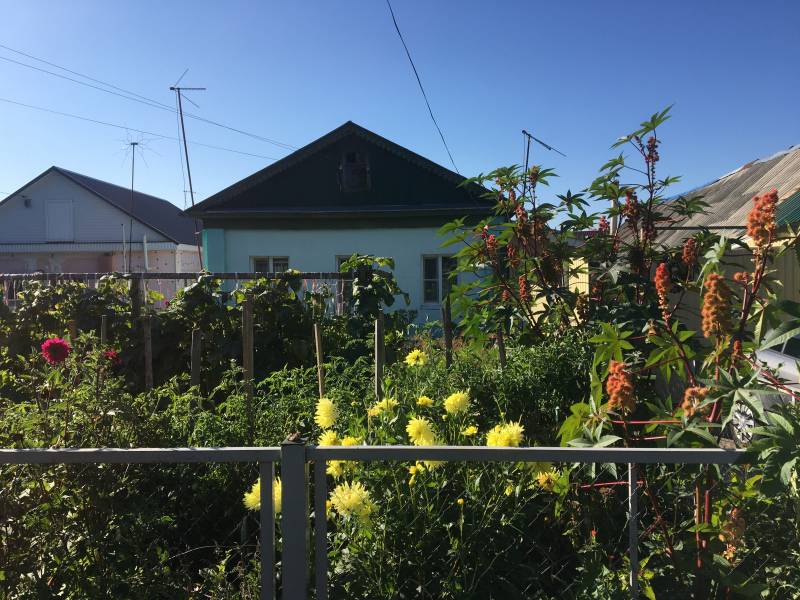
But on the Sands, many houses that are the same age as those events have been preserved! For example, this house already stood here then, and... its windows saw legionnaires with rifles running past it!

But this house, of course, was not here then. This is already a building of our era. But what if he was there then? Then we could put three machine guns on it, and not a single enemy would pass by it!
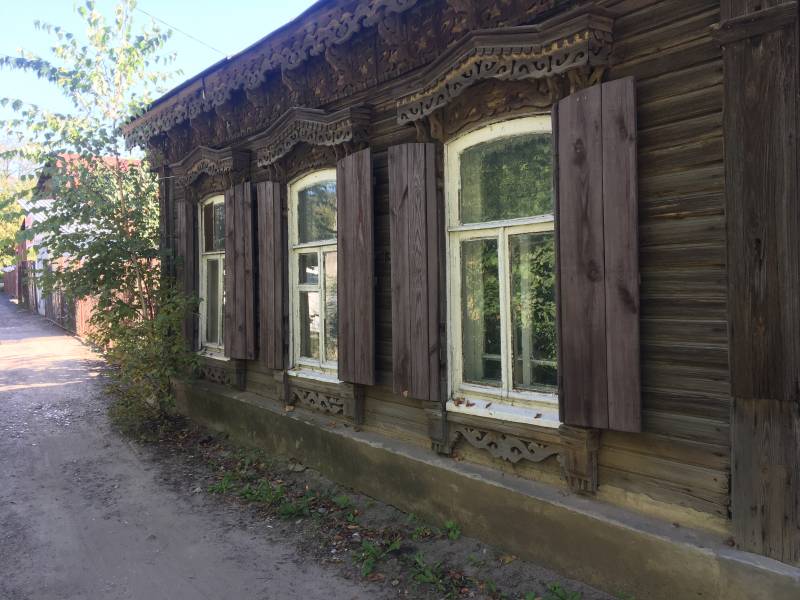
Another veteran of very respectable age. I interviewed the owners and found out that it was built back in 1880, that is, even before my house on Aleksandrovskaya Street, that is, Proletarskaya Street!
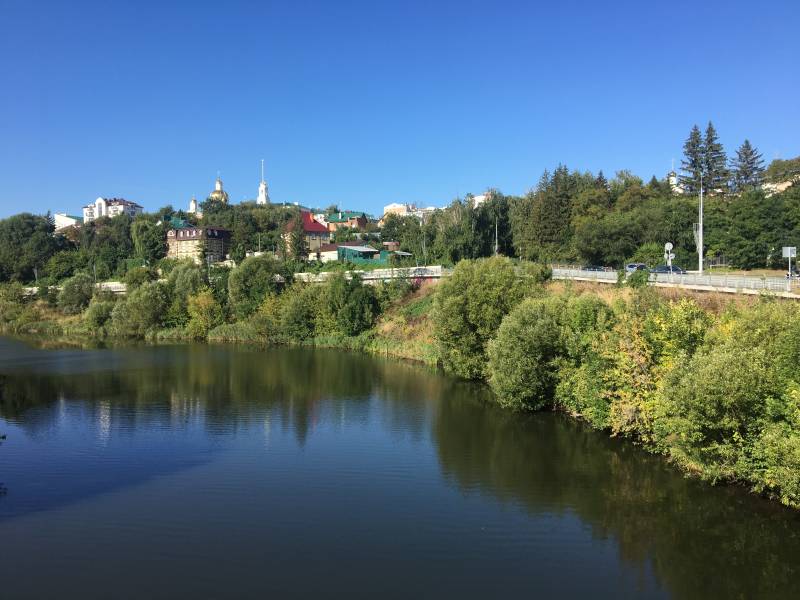
Green bank of the Sura river

The stone place leading to Sands Island is not so easy to see today...
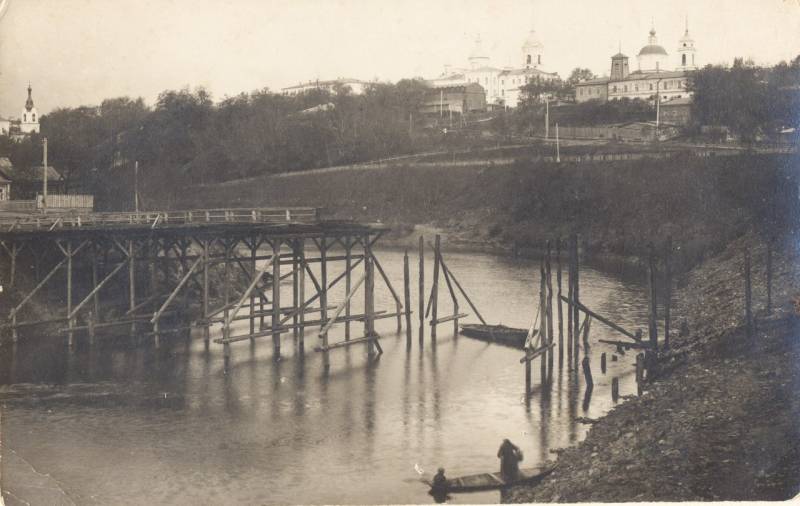
Then the bridge from Peski was burned down. But that didn’t stop the White Czechs!
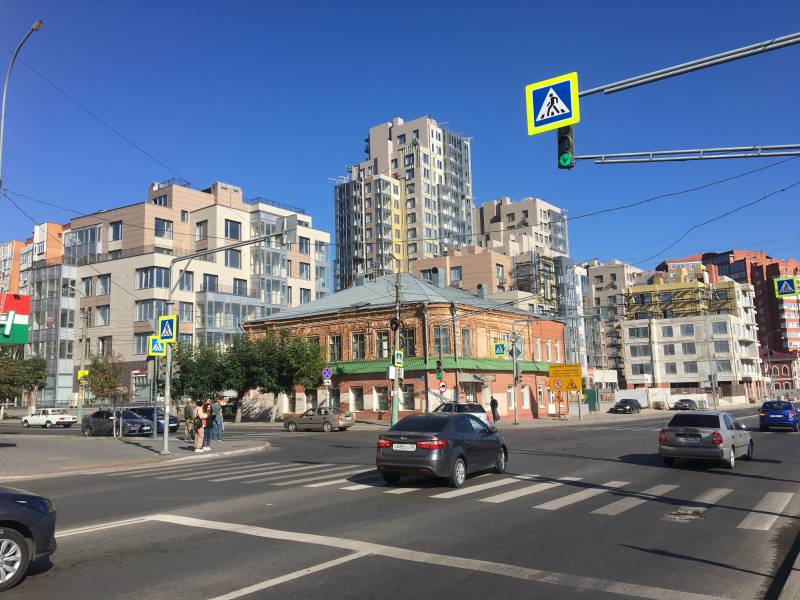
Another old house on the way to the city center. Now it is surrounded on all sides by modern houses under construction overlooking the river.

Interestingly, even a small amphitheater is provided on the embankment. If all this had been here during the Soviet era, I would certainly have had to give a lecture here about the mysteries of history or American imperialism - a threat to peace and progress!

This is a modern embankment, and here, in the distance, buildings turn white, again the same age as those events, and a bridge is visible that leads from the district to the center. It is clear that then it was not stone, but wooden. But the railway bridge following it has not changed, not a bit!
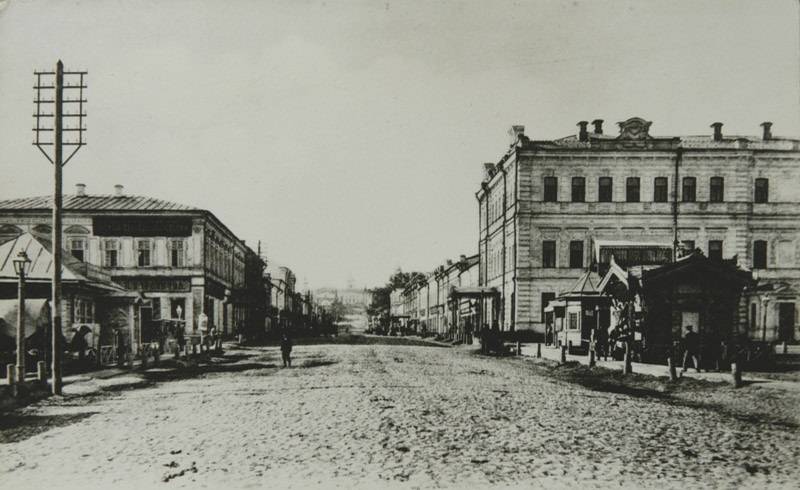
In general, the Czechs crossed the Sura and moved up Moskovskaya Street to Cathedral Square. It is interesting that both of these houses, on the left and on the right, are still standing. The right one is occupied by modern security officers and a barbecue, in which I have not been ... exactly 50 years! And on the left in a two-story house, as far as I can remember, there was a bunch of various shops. They are still there!

Moskovskaya Street is almost at the very top. It's amazing how little she has changed. The most noticeable ones are... trees! The street became green and shady. And why, I wonder, weren’t they imprisoned then? And here’s another thing - all these wires are gone
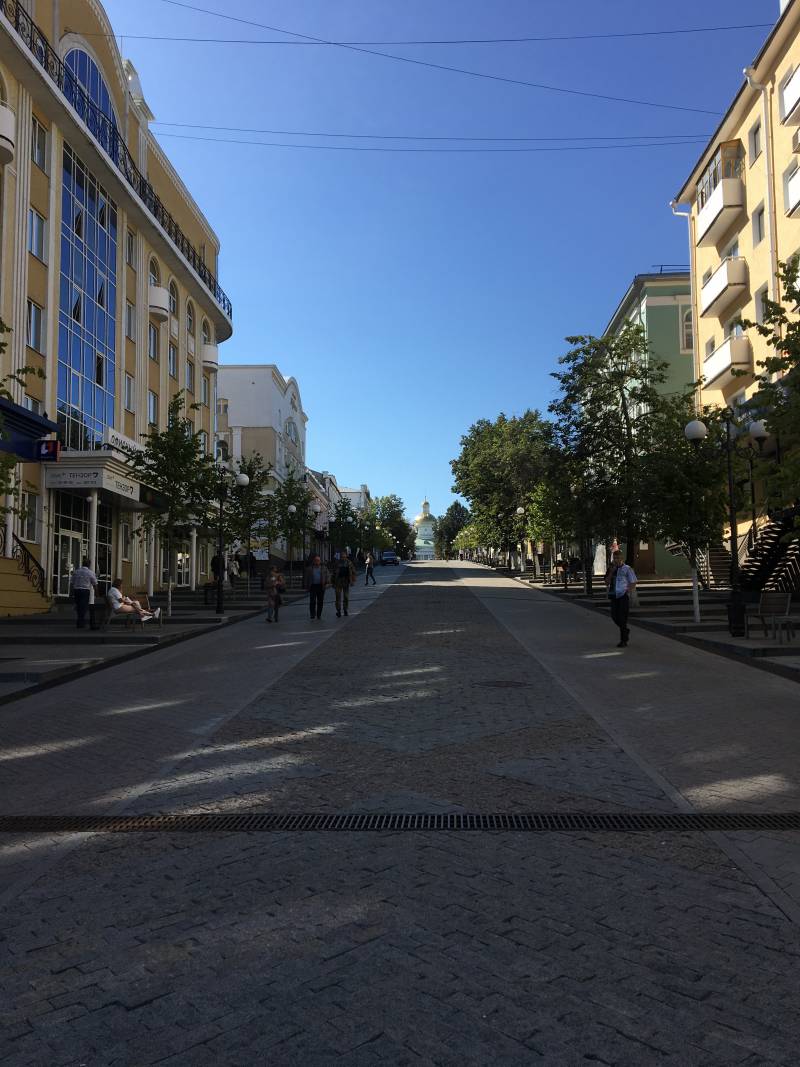
Previously, it was all paved with stone blocks polished to a shine, because of which the Czech armored car could not even drive up the mountain at first, and the soldiers had to push it!
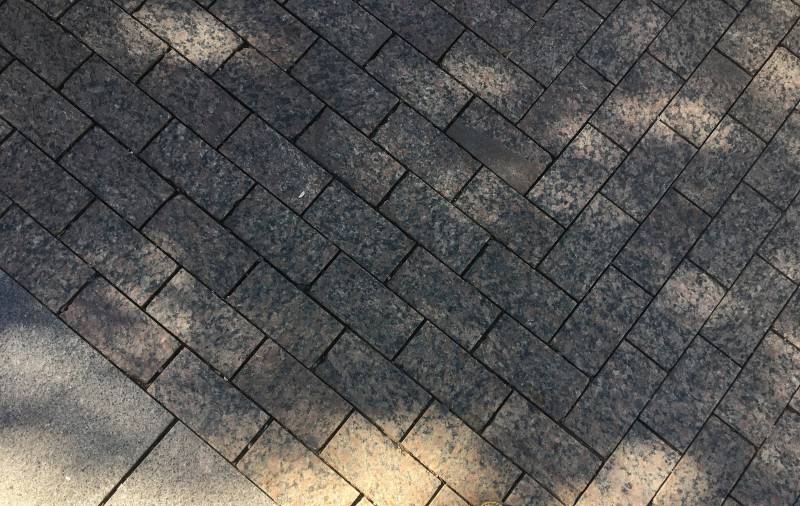
Today it is again paved with paving stones, but only it is still rough, and the street itself has become pedestrian

We climbed to the very top, and there today stands this cathedral. It is larger than what was here before. And the Bell Tower is located differently. And trees today would prevent armored cars from shooting at the building of the Soviet of Deputies...
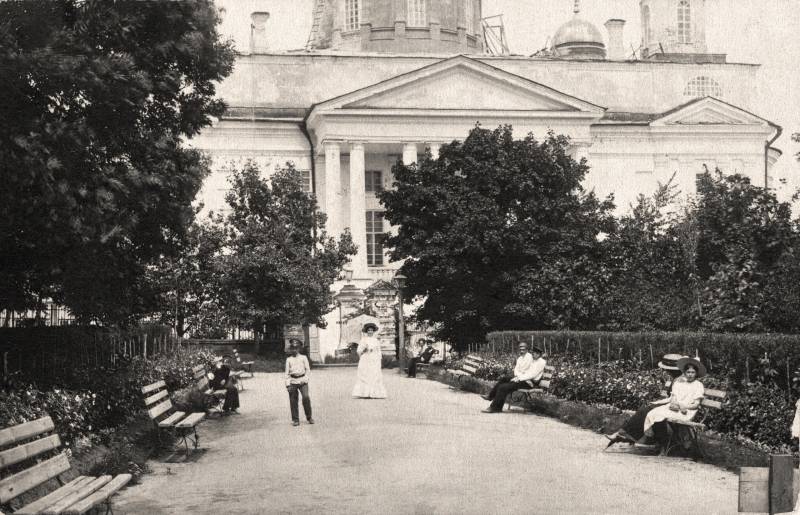
But even then the shops here were absolutely modern! Surprising even!
Well, about the events of that time, or rather, about how these events were described in the press in 1918, will be told next time.
PS
By the way, the first book of my trilogy “Three from Ensk” is dedicated to the events of that distant time, including the rebellion of the White Czechs, and the battles in Penza and in various other places, which was previously published only in Germany, and here in Russia and Singapore only only in electronic form. However, not everyone likes this form of publication, and reading a book while sitting in front of a computer screen is not entirely convenient. Therefore, many people asked me, is it possible to publish these books, as well as several of my other novels? Well, if not publish them, then at least print them privately, so that anyone who wants them can purchase them in printed form. And now this wish has come true! It was possible to print “Three...” and other books, both in paperback and hardcover. So now all these books can be ordered from the author, and with his autograph as a good memory.
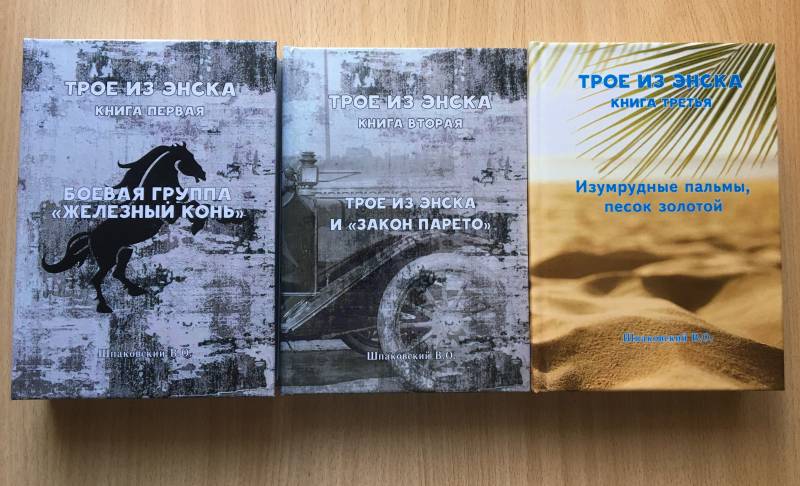
In the first book of the novel “Three from Ensk. The battle group "Iron Horse" takes place in 1918-1922. on the territory of Russia in the midst of the Civil War, and its heroes - two boys and one girl - take an active part in it on the side of the White Guard. In the second book, “Three from Ensk and Pareto’s Law,” they end up in the United States, go to study at Columbia University with a degree in public relations, fight bootleggers, help residents of one of the Hoovervilles, and in 1936 go to Spain to fight on the side ... Franco! In the third part of the novel “Emerald Palms, Golden Sand,” a distant descendant of one of the novel’s heroes is already trying to survive in the dashing 90s. But... he is forced to flee to Colombia, where he starts all over again and where he also has a very hard time. As a result, all the plot lines of the novel converge, but the end remains open, because who can tell us whether all our cherished plans will come true or not?! In general, it would be proposed, and then whoever wants what. Contact via PM on the website.
To be continued ...
Information